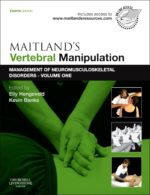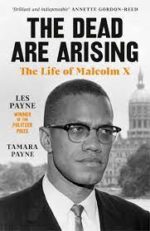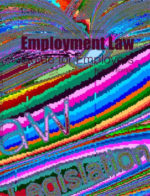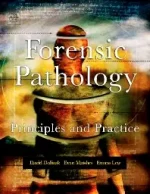-
Professional Ethics in Midwifery Practice
KSh 14,140.00Professional Ethics for Midwives: Conscious Practice is an applied ethics book designed for both students and practicing midwives to build ethical thinking in the context of daily practice. This unique text uses an accessible writing style and includes chapters on diversity and justice, informed consent, multiple relationships, confidentiality and privacy, scope of practice, and others. Realistic case examples throughout the text encourage critical thinking in applied ethics. The authors present a unique model for midwives’ ethical thinking and appendices include widely used codes of ethics in the field.
-
Happiness, Like Water-by Chinelo Okparanta
KSh 650.00introduces us to families burdened equally by the past and the future. Here, we meet a childless couple with very different desires; a college professor comforting a troubled student; a mother seeking refuge from an abusive husband; an embittered spinster recalling the loss of a dear childhood friend; and a young woman waiting to join her lover abroad. High expectations – whether of success in Nigeria, or the dream of opportunity and accomplishment in America – consume them. In language that is both raw and elegant, his stories are often told from the point of a view of a child – a little girl, an adult daughter. Her closely observed characters populate stories that offer a clear-eyed view of an often traumatic family life, questioning the purpose of their time on earth, and whether there is a hereafter, or a different kind of afterlife altogether, outside of Port Harcourt. Happiness, Like Water heralds the arrival of a fearless and sensitive literary voice.
-
The Da Vinci Code
KSh 400.00Blockbuster perfection . . . a gleefully erudite suspense novel.” —The New York Times
“A pulse-quickening, brain-teasing adventure.” —People
While in Paris, Harvard symbologist Robert Langdon is awakened by a phone call in the dead of the night. The elderly curator of the Louvre has been murdered inside the museum, his body covered in baffling symbols. As Langdon and gifted French cryptologist Sophie Neveu sort through the bizarre riddles, they are stunned to discover a trail of clues hidden in the works of Leonardo da Vinci—clues visible for all to see and yet ingeniously disguised by the painter.
Even more startling, the late curator was involved in the Priory of Sion, a secret society whose members included Sir Isaac Newton, Victor Hugo, and Da Vinci, and he guarded a breathtaking historical secret. Unless Langdon and Neveu can decipher the labyrinthine puzzle—while avoiding the faceless adversary who shadows their every move—the explosive, ancient truth will be lost forever.
KSh 3,460.00 -
The Famous Five: Five Go to Smuggler’s Top
KSh 695.00In book four, the Famous Five stay at the large old house at Smuggler’s Top. They discover secret hiding places, underground tunnels, and one night they catch people signalling out to sea!
Are there still smugglers at Smuggler’s Top?
-
Pocket Tutor Ophthalmology
KSh 3,900.00Titles in the Pocket Tutor series give practical guidance on subjects that medical students and foundation doctors need help with “on the go”. Their highly affordable price represents great value for those rotating through modular courses or working on attachment.
Topics reflect information needs stemming from today’s integrated undergraduate & foundation courses:
- Common investigations (ECG, Chest X-Ray, etc)
- Clinical skills (procedures, patient examination, etc)
- Important and/or complex specialties in which students receive comparatively little dedicated training (psychiatry, renal medicine)
Key Points
- Highly affordable price and convenient pocket size format – fits in back pocket!
- Ophthalmology receives little teaching time in the medical curriculum, so students often feel ill prepared to deal with eye problems – which are invariably urgent in nature
- Descriptions of common disorders enhanced by Clinical Scenarios (Patient presents with…) which help students and trainees to recognise and manage common presenting problems
-
Maitland’s Vertebral Manipulation, 8th Edition Management of Neuromusculoskeletal Disorders – Volume 1
KSh 21,840.00The legacy of Geoff Maitland and his seminal work, Vertebral Manipulation, continues in this eighth edition, with Elly Hengeveld and Kevin Banks leading an international team of experts who demonstrate how to manage vertebral neuromusculoskeletal disorders using the principles and practice of the Maitland Concept. Together, they ensure the heart of the Concept beats on by promoting collaborative decision-making with the patient at centre and emphasizing the art and science of observation, listening, palpation and movement skills.
A key feature of the new edition focuses on a more evidence-based and analytical view of the role of mobilization and manipulation in clinical practice The authors have written in a way that reflects their application of the Maitland Concept and how they have integrated techniques in the light of advancement in professional knowledge. Each chapter stands alone as a ‘master class’.
The text is systematically arranged focusing on detailed assessment, clinical reasoning and re-assessment to determine the physical dysfunction and efficacy of manipulative physiotherapy techniques, while also advocating continuous communication and interaction. Techniques of passive mobilization are also described, specifically designed around the individual patient’s condition.
All the chapters are written from a clinical perspective and review the evidence which informs how to deal with and manage spinal and pelvic pain as they present to the practitioner. Furthermore, each vertebral region (cervical, thoracic, lumbar, sacroiliac/pelvic) is considered from the point of view of best practice in analysing and hypothesising subjective data, examination, treatment and management of spinal pain conditions.
Brand new to the eighth edition is the addition of a companion website – Maitland’s Manipulation eResources (www.maitlandsresources.com) – providing access to a range of valuable learning materials which include videos, MCQs, interactive case studies, research links, and bonus chapters
“This text would be an excellent resource to any practising physiotherapist or health professional dealing with spinal disorders. It would enhance the manual skills and clinical reasoning of any therapist regardless of their experience. It is concise, clear to follow and covers each spinal section extensively with evidence-based practise and thought stimulating case studies and examples throughout.” Reviewed by: Tracy Ward, MCSP, BSc (HONS), MSc, Senior Physiotherapist and Clinical Pilates Specialist, BMI Healthcare Albyn Hospital, Aberdeen, Date: Oct 14
“Drawing on a wide spectrum of literature and expert guest authors to explain the reasoning behind treatment techniques this edition takes the reader on a wonderful clinical journey way beyond the Maitland concept.” Reviewed by: Tobias Bremer Date: 24/07/2014
-
The Dead Are Arising-the life of malcom x
KSh 2,195.00The Dead Are Arising is a penetrating and riveting work that affirms the centrality of Malcolm X to the African American freedom struggle and the story of the twentieth century. Renowned Pulitzer Prize-winning investigative journalist Les Payne paints vivid and dramatic scenes from start to finish, from Malcolm’s clandestine meeting with the KKK in 1961 to a minute-by-minute account of his murder in 1965, in which Payne reveals the complicity of the American government.Payne interviewed everyone he could find who had known Malcolm X in a nearly thirty-year-long quest – including siblings, classmates, friends, cellmates, FBI moles and cops, and political leaders. Conjuring a never-before-seen world of one of the twentieth century’s most compelling figures, this magisterial work sets his life not only within the political struggles of his day but also against the larger backdrop of American history
-
Employment Law Guide for Employers
KSh 1,665.00The Industrial Court does in its endeavour to interpret the various sections of labour statutes. However, majority of these guidelines have not been made accessible to employers in a manner that is easily and properly understood and appreciated. This is because, even though there is an attempt to avail the decisions of the Industrial Court to the general public, the ratios and the guidelines thereof have not been analyzed in a short, concise and easier manner. This book seeks to address this gap by focusing on the realist perspective.
-
Textbook Of Community Medicine Preventive And Social Medicine 8Ed
KSh 4,000.00The book is a comprehensive textbook on community medicine / preventive & social medicine, written by Sunder Lal, Adarsh & Pankaj — designed for MBBS / undergraduate medical students.
aibh.inIt is the 8th edition, revised and updated to align with the latest competency-based undergraduate curriculum for Indian medical graduates as mandated by the national regulatory authority.
It presents 20 thoroughly revised and updated chapters and addresses 107 core competencies with special emphasis on 18 skill-based competencies. In addition, the seventh edition incorporates attitude, ethics, and communication (AETCOM) skills (soft skills) to be integrated into undergraduate curriculum.★ The revised chapters on concept of health and disease, ethics in medicine and doctor–patient relationship, social and behavioural sciences (humanities), principles of health promotion and eduction, counselling and social marketing, health care of community and community diagnosis, gender issues and women empowerment, health care delivery systems, health planning and management, laws pertaining to practice of medicine, focus on: “real life issues” as illustrated in Problem based Learning, various case studies, building communication skills, eliciting health care seeking behaviours, barriers in health care, doctor—patient and community relationship, communication needs, assessment of comprehensive community diagnosis, therapy and prognosis, role of physician in health care system and responsibility to society and community, working in a health care team as leader and member of health team, health legislations pertaining to practice of medicine in outbreak and pandemic situation.All the chapters focus on “Community as Patient”, community diagnosis and community therapy. Whole of the government and whole of the socie
-
Forensic Pathology Principles and Practice
KSh 60,000.00Forensic Pathology is a comprehensive reference that uses a case-oriented format to address, explain and guide the reader through the varied topics encountered by forensic pathologists. Developed in response to a severe void in the literature, the book addresses topics ranging from medicolegal investigation of death to death scene investigation, forensic autopsy, and artifacts of resuscitation as well as complications of medical therapy, forensic osteology, forensic odontology, forensic photography, and death certification. The book includes various types of cases, including sudden natural death, asphyxia, motor vehicle collisions, death in custody, child abuse and elder abuse, acute psychiatric and emotional deaths, and pregnancy. It contains sample descriptions of pathological lesions which serve to aid pathologists in reporting their findings to law enforcement agencies, attorneys, and others involved in investigations of sudden death. The concepts outlined in the text are beautifully illustrated by large, colorful photographs. There are also “Do and Don’t” sections at the end of each chapter that provide guidance for handling the types of cases examined. This work will benefit not only experienced forensic pathologists, but also hospital pathologists who occasionally performs medicolegal autopsies; doctors in training; medical examiners; law enforcement personnel; crime scene investigators; attorneys; and fellows and students of the medical sciences.










